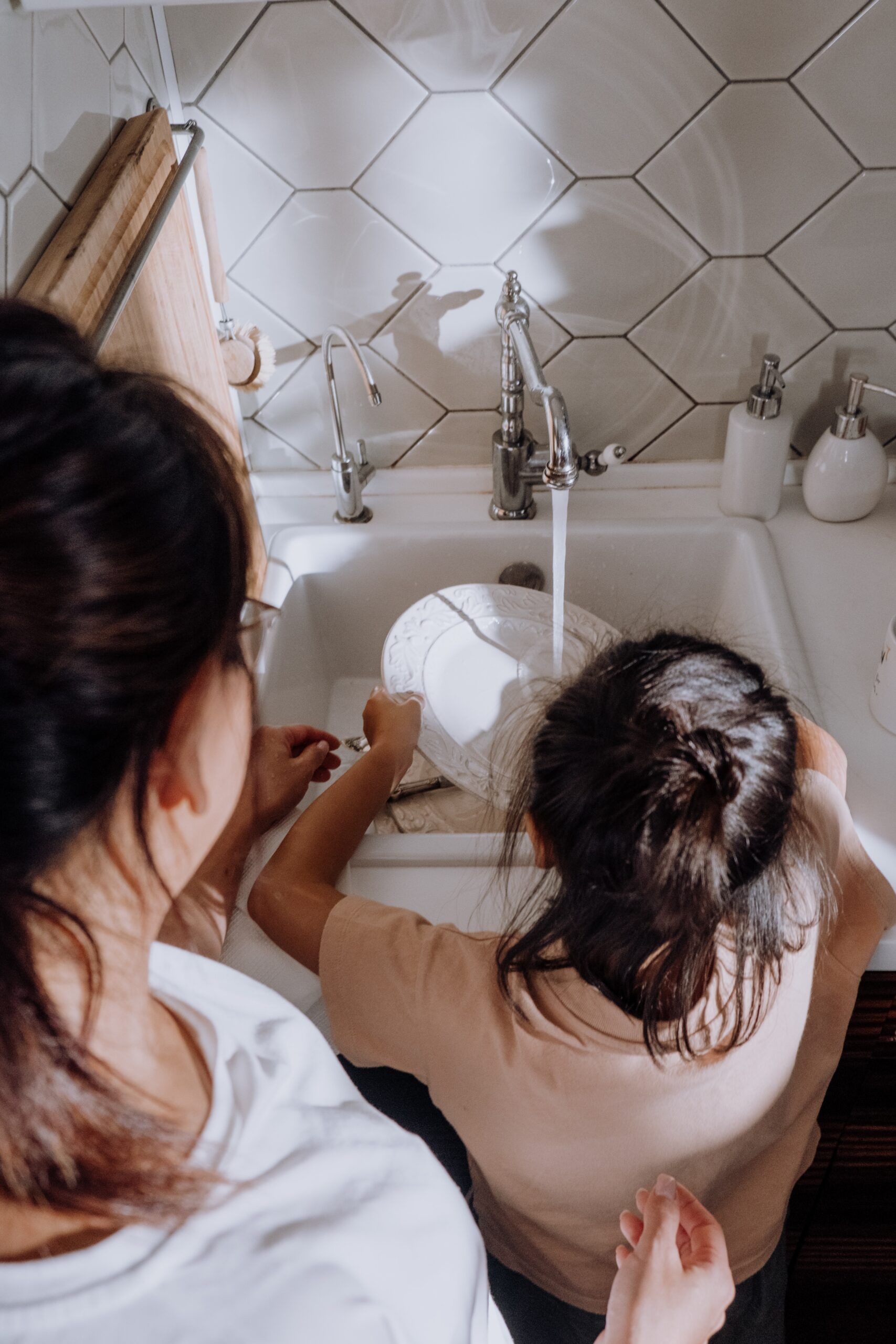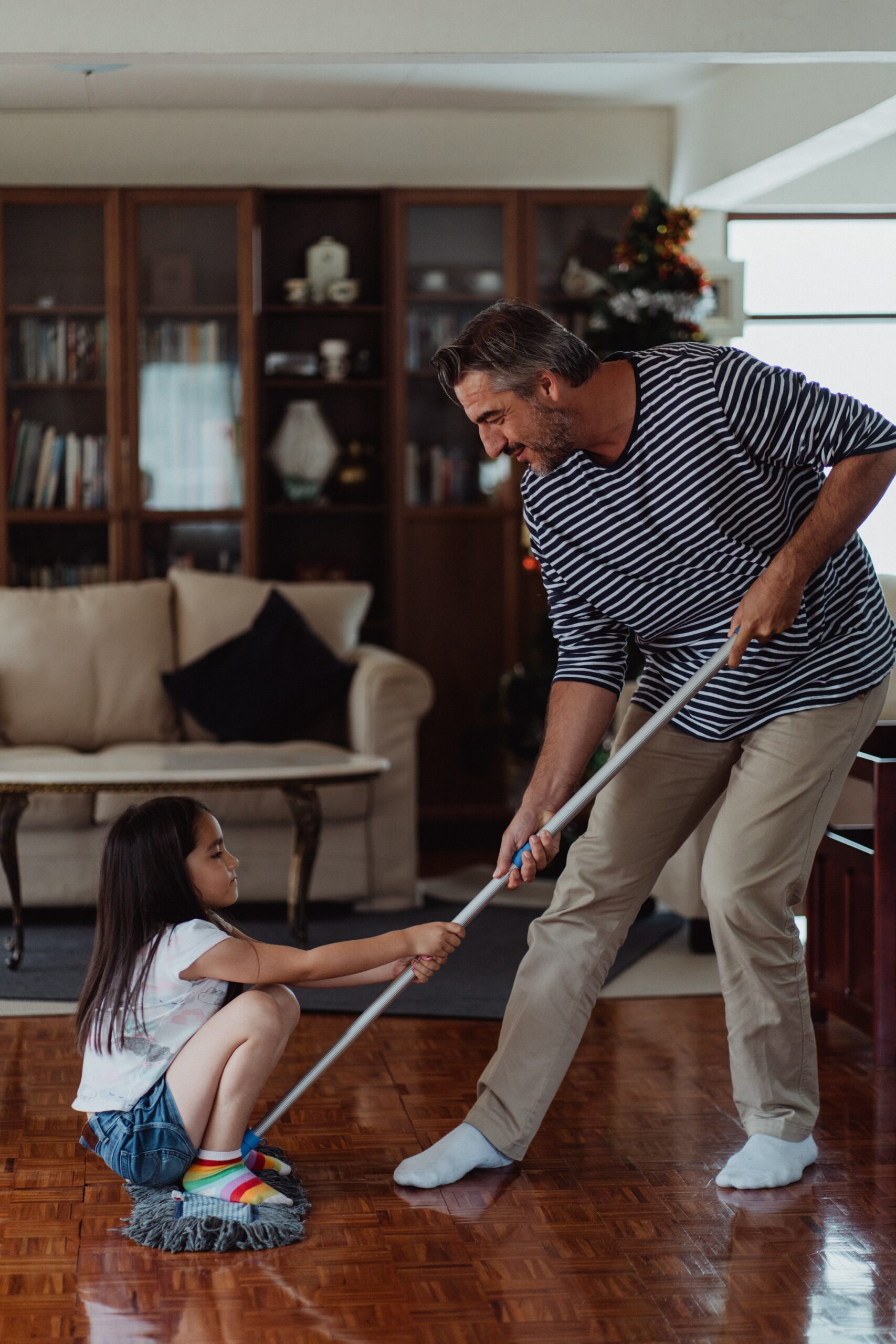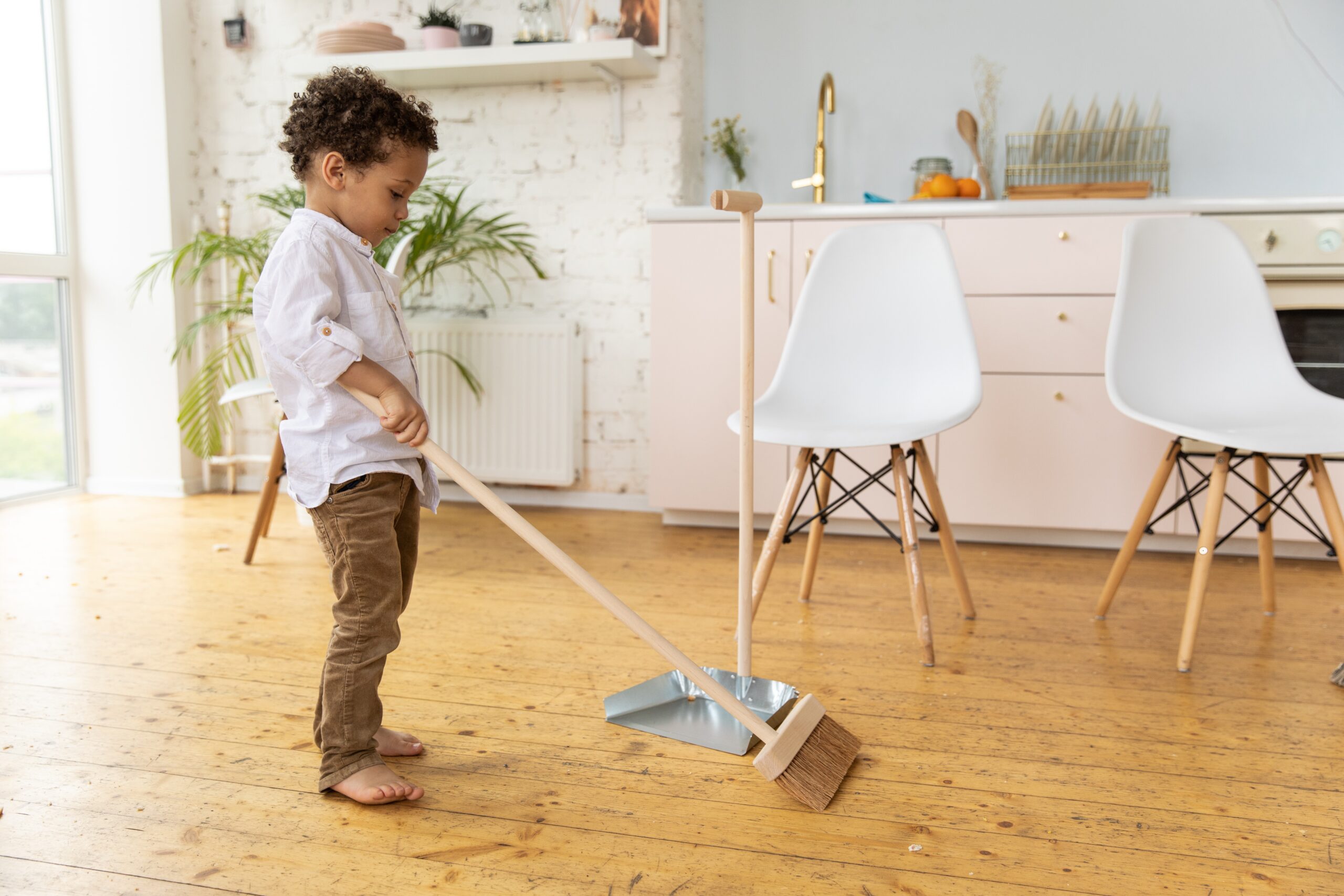In the whirlwind of modern life, balancing work, household chores, and family time can often feel like a high stakes juggling act. In truth, for most of us, the demands are not just about managing a career and a household, but also about ensuring that our children grow up with essential life skills. One of these vital skills, often overlooked in the chaos of daily routines, is teaching kids about organization.
Picture this: a home where toys find their way back to their designated bins, where morning routines flow smoothly, and where homework gets done without a fuss. It’s not an elusive dream; it’s a reality that can be achieved with the right strategies and a dash of patience. In this comprehensive guide, tailored specifically for busy families, we’ll delve deep into the art of teaching kids about organization and cultivating a harmonious haven for your family.
Whether you’re a working mom, a multitasking pro, or a first-time parent, these techniques will help you create a neat and cozy house while nurturing your child’s organizational skills. Let’s embark on this journey together and unlock the secrets to a more organized and harmonious home.
**As an Amazon Associate, I earn from qualifying purchases.**(Any word(s) that are bold and turn green when you hover over them are product links.)
The Importance of Teaching Organization to Kids
It’s never too early to start teaching your children about organization. In fact, laying the foundation for organizational skills should begin as soon as they start to understand the concept of order. Granted that, as busy moms, it might seem like an additional task on your to-do list, however, the long-term benefits far outweigh the initial effort. By instilling these skills early, you’re equipping your children with tools they’ll use throughout their lives.
Consider explaining to your kids how organization benefits them in the present and the future. Firstly, start with the basics such as how an organized room makes it easier to find toys, games, and clothes. This reduces daily stress and frustration for both you and your children. Additionally, as they grow, they’ll realize that these skills extend beyond their personal space and into their schoolwork, careers, and relationships.

Kid-Friendly Organizational Tools
When teaching kids about organization, it’s essential to make the process enjoyable and engaging. Introduce them to kid-friendly organizational tools that turn tidying up into a fun activity. Here are some must-have products that can simplify this process:

- Storage Solutions: Colorful bins, toy organizers with playful designs, and closet dividers can make tidying up a game rather than a chore. Kids are more likely to participate when they find it enjoyable.
- Chore Charts: Consider magnetic or dry-erase chore charts. These visual aids allow children to track their progress and take ownership of their responsibilities. For younger kids, opt for charts with pictures or stickers to represent tasks.
- Label Makers: Label makers can be a fantastic tool to involve kids in the organization process. Let them create labels for their belongings or even make fun labels for shared spaces like the pantry or playroom.
Clearly, by incorporating these tools, you’re not only teaching organizational skills but also fostering independence and responsibility in your children.
Creating a Family Routine
One of the keys to a well-organized household is establishing a family routine, with the purpose of bringing structure to your daily lives and ensuring that everyone is on the same page. Here are some routines to consider implementing:
- Morning and Bedtime Routines: Start and end the day with a consistent routine. This includes tasks like brushing teeth, getting dressed, and setting the table for breakfast. Having a predictable morning and bedtime routine can significantly reduce morning chaos and bedtime battles.
- Weekly Family Meetings: Set aside time for a weekly family meeting where everyone can discuss upcoming events, plan activities, and go over chores. This promotes open communication and helps everyone feel involved and heard.
- Reward Systems: Implement a reward system to incentivize your kids to stick to their routines and complete their chores. Consider using charts or token systems where they can earn rewards for their efforts.
These routines not only help in teaching kids about organization but also create a sense of order and predictability in your home, reducing stress for both you and your children.
Involving Kids in Chores
Chores are a fantastic way to teach kids about organization and responsibility. Assigning age-appropriate tasks is essential to ensure that they can successfully complete their chores. Here’s how to go about it:
- Age-Appropriate Tasks: Tailor chores to your child’s age and capabilities. Younger kids can be responsible for picking up toys, while older ones can handle more complex tasks like folding laundry or setting the table.
- Teamwork and Responsibility: Explain to your children that chores are not just about keeping the house clean but also about contributing to the family. This encourages them to take pride in their responsibilities and emphasize the importance of working together as a team.
- Assigning Roles: Create a chore chart or schedule that clearly outlines who is responsible for what. This not only ensures that chores are distributed fairly but also helps kids understand their roles in maintaining a well-organized home.
By involving kids in chores, you’re instilling a sense of ownership and teamwork, which are crucial components of effective organization within a family.
Organizing Homework and Study Spaces
Organizing your child’s study space is essential for academic success. A well-structured and clutter-free environment can significantly improve focus and productivity. Here’s how to create an ideal study space:
- Dedicated Study Area: Designate a specific area in your home for homework and studying. Ensure it’s comfortable and free from distractions. A desk and a comfortable chair with good lighting are key elements.
- Time Management: Teach your children time management skills by setting a schedule for homework and study sessions, along with using timers or alarms to help them stay on track.
- Supplies Organization: Invest in desk organizers and storage solutions for school supplies because having easy access to pens, pencils, paper, and textbooks reduces the time spent searching for materials.
A well-organized study space not only promotes good study habits but also helps in teaching kids about organization and the importance of keeping their work areas tidy.
Decluttering Together
Decluttering is an integral part of teaching kids about organization. It teaches kids the value of prioritizing and simplifying their lives. Make it a family affair by involving your children in the decluttering process:
- Seasonal Purges: Make decluttering a seasonal tradition. This encourages your kids to go through their belongings and decide what they want to keep, donate, or discard.
- Donation and Recycling: Teach your children about giving back to the community by donating gently used toys and clothing to those in need. Show them the importance of recycling to reduce waste.
- Emotional Attachment: Address the emotional aspect of decluttering as it helps your kids understand that it’s okay to let go of items that no longer serve a purpose or bring them joy.
By involving your children in decluttering, you’re not only creating a more organized home but also instilling values of generosity and environmental responsibility.

Leading by Example
As a parent, you’re the most influential role model for your children. Furthermore, by demonstrating your own organizational skills and routines, you set a powerful example:
- Show and Tell: Share your own organizational strategies with your kids. Explain how you manage your work, schedule, and household tasks. This transparency can help them understand the practicality of organization.

- Quality Time: Emphasize that organization isn’t just about cleaning and tidying but also about creating more quality time together as a family. Additionally, show them that being organized allows for more opportunities to engage in fun activities and adventures.
- Flexibility and Adaptability: Teach your children that life is dynamic, and sometimes routines need to be adjusted. Show them how to adapt to changes while maintaining a sense of order and balance.
Leading by example not only teaches your kids about organization but also strengthens the parent-child bond and promotes a harmonious family life.
Staying Consistent
Consistency is key to successful organization as it encourages your children to stick to routines and habits, even when life gets busy or unpredictable:
- Sticking to Routines: Emphasize the importance of consistency in maintaining an organized home. Remind your kids that routines are there to make life smoother, especially during hectic times.
- Adapting to Change: Teach your children how to adapt their routines and organizational strategies when unexpected events occur. Flexibility is essential to maintaining balance.
- Celebrate Progress: Recognize and celebrate your children’s progress in becoming more organized. Small victories and efforts should be acknowledged and praised.
In the end, staying consistent with organizational efforts ensures that your family reaps the full benefits of a neat and cozy home.
With these strategies and tips, you can successfully teach your kids about organization while managing your busy schedule as a busy parent. Remember, the journey to a well-organized household is a gradual process, and every small step brings you closer to a harmonious and clutter-free home.
Product Recommendations for Teaching Kids About Organization
Toy Organizers:
Toy organizers are a game-changer for parents looking to declutter and bring order to their children’s play areas. These organizers typically come in various sizes and designs, featuring colorful bins, shelves, and compartments that make tidying up toys a breeze. They encourage kids to take an active role in keeping their play space organized, teaching valuable lessons in responsibility and cleanliness.
Magnetic Chore Chart:
A magnetic chore chart is an engaging way to involve kids in household responsibilities. These charts often feature a magnetic surface with colorful magnets representing different chores or tasks. As children complete their assignments, they can move the corresponding magnets to the “completed” section, providing a visual sense of accomplishment and progress. It’s a fantastic tool for teaching kids about organization and time management.
Label Maker:
Label makers are a versatile tool that can be a valuable asset in teaching kids about organization. These devices allow you to create clear and professional labels for various items around the house. You can label toy bins, school supplies, pantry items, and more. Kids can get creative by using label makers to personalize their belongings while learning the importance of categorization and order.
Desk Organizer:
A desk organizer is an essential addition to your child’s study space. It helps keep school supplies, textbooks, and stationery neatly organized. Look for desk organizers with compartments, drawers, and slots to store everything efficiently. A well-organized study area not only enhances your child’s productivity but also teaches them the importance of maintaining an orderly workspace.
Kids’ Desk and Chair Set:
Investing in a dedicated kids’ desk and chair set can significantly improve their study space. Look for ergonomic designs that promote good posture and come with storage compartments for books and supplies.
Color-Coded Organizing Baskets:
To make sorting and organizing even more accessible for kids, consider color-coded organizing baskets. Assign specific colors to different categories of items, making it a breeze for your little ones to know where everything belongs.
Wall-Mounted Pegboards with Bins:
Pegboards are fantastic for creating vertical storage solutions. Hang one in your child’s room to display and organize their favorite toys, art supplies, or even sports equipment.
Personalized Name Labels:
Personalized name labels not only add a fun element to organization but also help your kids identify their belongings easily. Label school supplies, water bottles, and more.
Family Planner or Calendar:
A family planner or calendar helps keep everyone on the same page. Opt for one with large, easy-to-read sections for each family member to manage their schedules and appointments.
Wall-Mounted Shoe Rack:
Keep shoes organized and off the floor with a wall-mounted shoe rack. Furthermore, this not only reduces clutter but also encourages kids to put their shoes away neatly.
Over-the-Door Storage Solutions:
Over-the-door organizers are versatile and can be used to store everything from shoes to accessories. They are particularly handy in kids’ rooms and bathrooms.
These additional products can further streamline organization within your home and make the process more enjoyable for your kids. When combined with the strategies discussed in the blog, they will contribute to creating a well-organized and harmonious living space for your family.
Teaching kids about organization is a journey that requires patience, consistency, and a sprinkle of creativity. For busy moms, it’s not about striving for perfection but creating an environment where children can thrive. As you embark on this adventure, remember that small steps lead to big changes.
Embrace the opportunity to bond with your kids while nurturing essential life skills. By instilling the value of organization, you’re not only creating a neat and cozy house but also preparing your children for a future filled with success and harmony.
Start today, and watch your family grow together in an organized and harmonious home.
Head to the Blogs page to read more about planning, decluttering and organizing!












